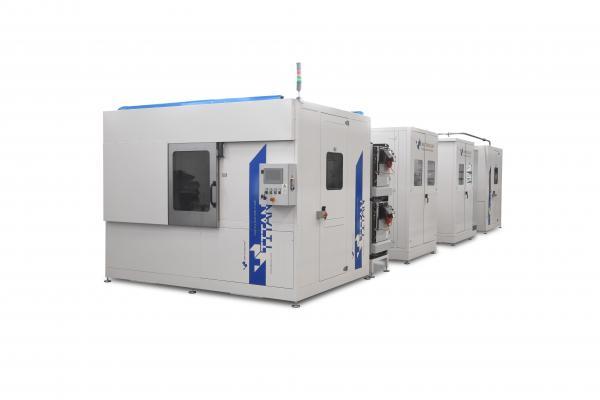In industrial processing, the concept of flushing identifies two very different operations. In this article, we will briefly describe them, focusing only on one specific meaning of the word “flushing”.
We will talk about this process, intended as an operation to eliminate residues of various kinds inside pipes or equipment, thanks to the passage of a fluid.
Finally, we will present DBM Tecnologie's installations for water flushing.
Flushing is a process that can be applied in various sectors: in its most frequent uses, the term can have a double meaning.
In production areas such as the automotive and hydraulics sectors, the term “flushing” indicates a special cleaning operation. By flushing, a fluid is introduced into the pipes that have to be cleaned (water, in the case of DBM systems). This fluid, with a pressure calibrated according to the result to be achieved, transports the contaminants, cleaning the pipes.
Instead, in the metal industry, flushing is a step in the galvanising process. The part to be galvanised, which has previously undergone a cleaning process known as pickling, must be protected before the zinc bath. This is achieved by a flushing process, intended as the application of a film that prevents subsequent oxidation of the material.
However, here we will only deal with the first meaning of flushing. For this cleaning process, DBM Technologies offers equipment designed to meet the different needs of companies seeking flexibility, productivity, operational and economic efficiency.
Specifically, flushing enables the removal of swarf or residue stuck inside pipes or ducts in areas with complex geometries.
Here some of the most frequent applications.
Thus, an effective flushing operation ensures that piping, tubing and housings are in perfect working order. So, the performance and safety of machinery is safeguarded, avoiding malfunctions, downtime, loss in quality and accidents in the various fields of application.
DBM systems for flushing and deburring ensure flexibility and compliance with customer requirements.
Depending on the case, for example, the system can be equipped with a robotic arm, or include a flushing system that attaches directly to the workpiece to be cleaned.
Workpieces can be processed one at a time or placed in trays or batches. The latter solution, as we shall see, meets the needs of companies that want to ensure greater productivity by reducing processing times.
In addition, the systems can have different configurations according to requirements: rotary table, tunnel, multi- or single chamber washing environments. The flexibility of operations is also ensured by programmable automation mechanisms and a special detection system that recognises the type of load.
There are three flushing and deburring systems from DBM technologies. Let’s see them all.
All flushing plants are connected to a water treatment system that purifies the liquid from residual oils and filters it. Thus, the water can be reused, saving costs and resources.
Flushing can also be combined with other cleaning operations. For example, hybrid systems can be created. In these, flushing systems are combined with industrial washing systems.
In this way, several stages are combined, saving time, increasing efficiency and improving the quality of the end result.
Discover advantages, flexibility and effectiveness of DBM Tecnologie flushing systems for your company: contact our technicians to find out more.
